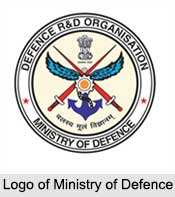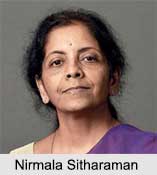 Indian Ministry of Defence deals with the defence and protection of the country as well as the maintenance of the armed forces. The responsibility of the country`s defence lies with the Indian Cabinet and within the Cabinet is the Ministry of Defence which looks into the Defence policies of the country and ensures the protection of the land.
Indian Ministry of Defence deals with the defence and protection of the country as well as the maintenance of the armed forces. The responsibility of the country`s defence lies with the Indian Cabinet and within the Cabinet is the Ministry of Defence which looks into the Defence policies of the country and ensures the protection of the land.
It is the Ministry of Defence which forms the defence policies of the land and guides the armed personnel of the country to bring about maximum protection of the country. The President of India is the Supreme Commander of the Armed Forces of the country. The Ministry organises and runs Republic Day celebrations and parade every year in January, hosting a chief guest. Nirmala Sitharaman is the new Defence Minister.
History of Indian Ministry of Defence
In the year 1776, A Military Department was created by the Supreme Government of the British East India Company at Kolkata. Its main purpose was to organize and record orders, relating to the Army. Military Department originally functioned as a branch of the Public Department and preserved a list of Army workers.
East India Company was re-organised into four Departments with the Charter Act of 1833 the Secretariat, each headed by a Secretary to the Government. The ultimate authority over the Indian Army was vested in the Governor General-in-Council who was subject to the Control of the Crown. Two Members in the Council were accountable for military concerns. The Commander-in-Chief was responsible for all operational matters.
 In March 1906, Military Department was eliminated and was replaced by two separate Departments; the Army Department and the Military Supply Department. In April 1909, the Military Supply Department was abolished and its functions were taken over by the Army Department. The Army Department was re-designated as the Defence Department in January 1938. Finally in 1947, the independence year of the Indian subcontinent the Army Department was converted to the Ministry of Defence.
In March 1906, Military Department was eliminated and was replaced by two separate Departments; the Army Department and the Military Supply Department. In April 1909, the Military Supply Department was abolished and its functions were taken over by the Army Department. The Army Department was re-designated as the Defence Department in January 1938. Finally in 1947, the independence year of the Indian subcontinent the Army Department was converted to the Ministry of Defence.
Administration of Ministry of Defence
Ministry of Defence has four Departments. They are;
•Department of Defence (DOD),
•Department of Defence Production (DDP),
•Department of Defence Research and Development (DDR and D) and
•Department of Ex-Servicemen Welfare and also Finance Division.
The head of the Defence Department is the Defence Secretary who is responsible for co-ordinating the activities of the four departments of security.
Role of Ministry of Defence
The main function of the Defence Ministry is to structure different policies on defence and security-related issues. The Ministry also communicates with the different policies to the various departments needed. An important factor, which the Ministry of Defence follows in framing its policies, is that all the planning should be done within the framework of the resources which have been allocated by the Central Government.
Universities and Institutes of Ministry of Defence
Institute for Defence Studies and Analyses, Defence Institute of Advanced Technology, Defence Institute of Psychological Research and National Defence University come under administration and purview of the Ministry of Defence.
Ministers of Ministry of Defence
Ministry of Defence is headed by the Union Cabinet Minister for Defence, who is supported by more than one Ministers of State. There are about 400,000 defence civilians, under the Ministry of Defence including the Ministry of Finance.




















